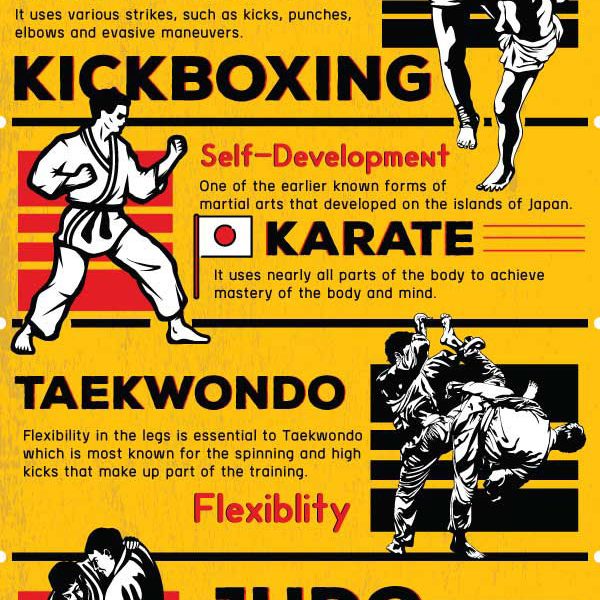Exploring The Rich Heritage And Spiritual Measurement Of Fighting Style: A Comprehensive Assessment
Exploring The Rich Heritage And Spiritual Measurement Of Fighting Style: A Comprehensive Assessment
Blog Article
Write-Up Writer-Ryberg Patterson
Step into the ancient globe where martial arts were born out of necessity in varied regions. Societies crafted unique fighting designs linked with historic contexts. Strategies evolved over centuries via devoted practice and cultural exchanges. Today, modern-day martial arts blend conventional elements for optimal effectiveness. Philosophically, martial arts stress self-control, self-improvement, and harmony. Respect, humility, and equilibrium are foundational principles leading practitioners in the direction of growth and durability. Explore the depths of this rich history and ideology to uncover the profound impacts forming this long-lasting self-control.
Origins of Fighting Style
Fighting style originated in numerous regions around the world, progressing as functional fight systems to defend against threats. updated blog post battling styles were created out of need, with each culture crafting methods fit to their special environments and obstacles. From the grappling arts of Jujutsu in Japan to the striking techniques of Martial art in China, martial arts were deeply linked with the historical, social, and cultural material of their corresponding societies.
In Japan, the samurai course refined martial arts like Kenjutsu, the art of the sword, which later on advanced into the much more popularized kind of Kendo. On the other hand, in Brazil, Capoeira emerged as a mix of dancing and fight, developed by enslaved Africans as a way to stand up to injustice. Each fighting style brings with it an abundant history and ideology, showing the values and beliefs of the people that exercised them.
As you look into the origins of martial arts, you reveal a tapestry of human ingenuity, strength, and the unyielding spirit of warriors throughout time.
Advancement of Strategies
With centuries of technique and improvement, fight methods within numerous martial arts have actually undertaken an extensive advancement. From ancient designs like Kung Fu and Karate to a lot more modern-day self-controls such as Brazilian Jiu-Jitsu and Krav Maga, the advancement of techniques has actually been driven by a combination of social impacts, functional applications, and technical developments.
One significant aspect of this advancement is the cross-pollination of methods between different martial arts. For Read the Full Write-up , methods from conventional Japanese Jiu-Jitsu were integrated right into the creation of Judo by Jigoro Kano in the late 19th century. This blending of styles has caused the development of hybrid martial arts like Mixed Martial Arts (MIXED MARTIAL ARTS), which combine aspects of striking, grappling, and entry strategies.
In addition, the advancement of strategies has actually been formed by the raising focus on performance and effectiveness in fight. Professionals have actually constantly looked for to improve their strategies through rigorous training, testing, and competition, resulting in the development of extremely specialized and reliable combating designs. Overall, the evolution of techniques in martial arts reflects the dynamic nature of combat and the ongoing pursuit for renovation and development.
Thoughtful Structures
Discovering the underlying philosophical concepts of martial arts offers insight right into their core values and directing ideas. At the heart of many martial arts techniques is the principle of self-control itself. By training your body and mind to work as one cohesive device, you cultivate discipline that prolongs past the dojo or fitness center into everyday life. This self-control includes regard, humbleness, and self-control, forming not simply your physical capabilities however also your character.
Another fundamental philosophical structure in martial arts is the idea of continual self-improvement. The trip of mastering a martial art is perpetual, with experts constantly making every effort to far better themselves, both physically and psychologically. This concentrate on growth fosters strength, willpower, and a development frame of mind that can be related to all elements of life.
Additionally, martial arts highlight the value of consistency and equilibrium. Techniques are developed to use an opponent's energy against them, highlighting the principle of generating and redirecting pressure instead of meeting it head-on. This philosophy encompasses interpersonal relationships, advertising serene resolutions and mutual understanding. By accepting these philosophical structures, martial musicians not just improve their combat abilities however also grow a way of life centered on individual growth, respect, and consistency.
Conclusion
To conclude, the history and philosophy of martial arts provide a rich tapestry of custom, discipline, and self-improvement.
Take for example the tale of Bruce Lee, that transformed martial arts by blending various designs and ideologies to develop his own one-of-a-kind type of Jeet Kune Do.
Through devotion and technology, martial musicians remain to press borders and inspire others to reach their full possibility both in combat and in life.
